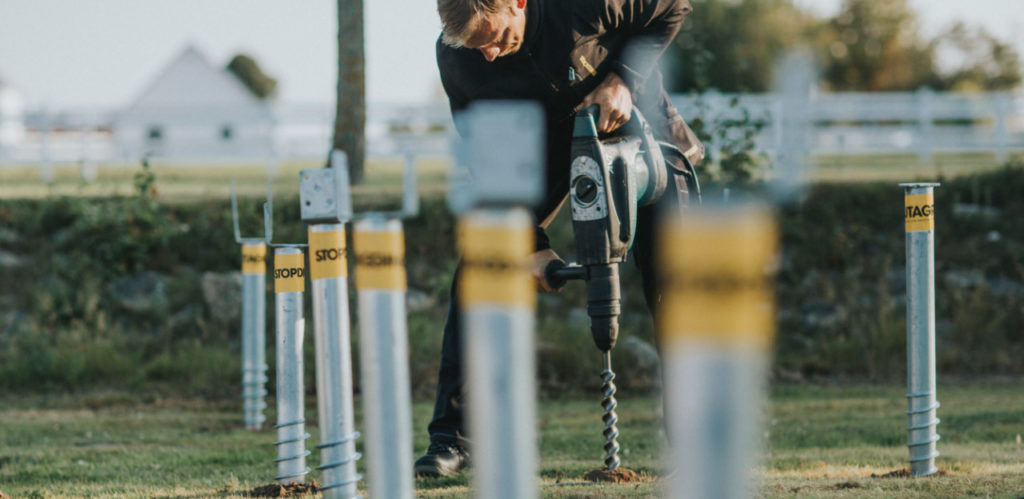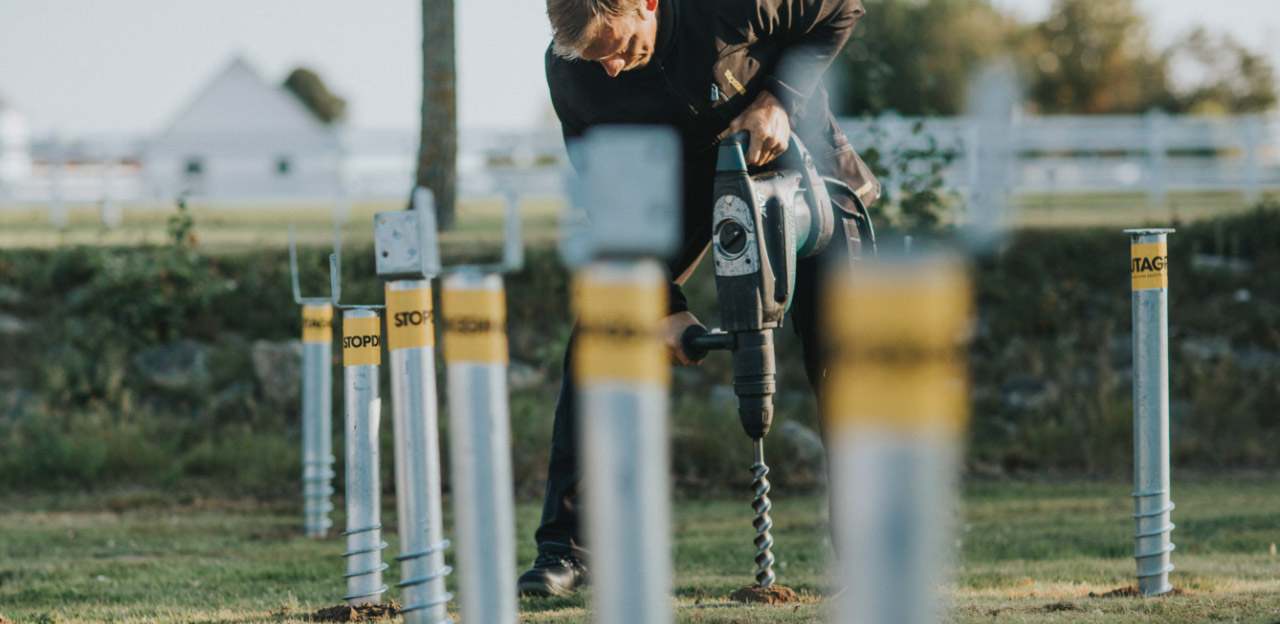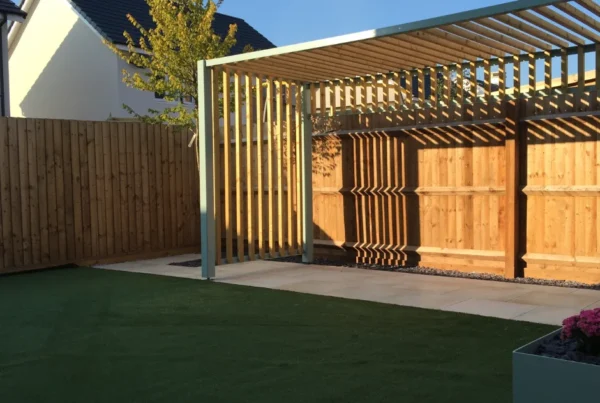Architects/Designers and Structural engineers are discovering a greener, innovative alternative to concrete

With the world becoming more aware of the damage that is being done to our planet, and architects realising that the cement in concrete contributes to 5% of the worlds C02 emissions, many architects want to do their part to help their clients build greener, sustainable structures.
The conventional view is that eco-friendly alternatives are more expensive, but that is not always the case. In a recent survey by RIBA, clients felt that their architects were not finding ways to add value to their projects.
In this article, we will explore a product on the market that will save their clients time, hassle and money, whilst reducing their footprint.
What’s more is that this product can help overcome many of the obstacles that an architect can face when designing foundations for a building/structure.
What are ground screws?
Ground screws are large screws that eliminate the need to dig foundations and create concrete bases. These large screws come in a variety of sizes with different applications dependant on the project but typically the depths are between 865m-2500m The structure can be simply placed on top or slotted into the screw.
What can they be used for?
Some of the uses include: One or two-storey timber framed homes, SIP panel extensions, Cabins, Garden buildings, Shipping containers, Decking, Fencing, Signs, Benches, Walkways, Playgrounds, Sports equipment, Car ports, Pergolas, Temporary structures.
What are the benefits over concrete?
They save time For example, a small project like a garden room would typically take a builder two days to dig foundations, pour concrete and have a dry concrete base ready for the garden room to be installed. With ground screws, each screw takes just minutes to install. In less than half a day the screws would be installed ready for the garden room to be placed on top.
Now imagine a timber framed house, the time saved would really be significant and time = money.
Money
In the UK, the average cost of a concrete base is between £120-£150 per square meter (including labour and materials)Stop Digging ground screws start from as little as £50+VAT per screw, that would typically cover 1 square meter. (This includes supply and installation)
Hassle
Digging the foundations for an extension or home is a big, messy job that involves a lot of work and damage to the surrounding areas and to the client’s garden.
Ground screws on the other hand take away all the hassle. The experienced installers scan the area for electric cables or pipes, mark it out, bore pilot holes to check where the screws will go and then install them. No mess, no hassle, no damage to the surrounding areas.
What other obstacles can a ground screw system overcome?
Many architects are frustrated when they take on a project for a client, only to discover;
A) There is a TPO (tree protection order) so you can’t use concrete
B) They want to build in a conservation area
C) The ground is on a slope or uneven
D) Access is difficult
Ground screws are a fantastic solution.
If there are protected tree roots in the area, ground screws could be the answer as they will not damage the tree roots. (click HERE to see our blog on TPOs)
Conservation areas
The ground screws cause no damage to the surrounding areas making it perfect for conservation areas
Slopes and uneven ground
Ground screws are ideally suited to work on slopes to anchor, for example, decks or stairs or other structures. The equipment used can install the screws in difficult to reach locations at the required depths. Furthermore, by combining the various ground screw sizes and models produce, together with the attachments such as plates and L-supports, there is a solution whatever the terrain or slope the project faces
Difficult Access
The machinery is handheld therefore in places that are difficult to access or terraced houses our screws are perfect. No need for skips etc. as they leave no mess.
Much better for the environment
In comparison, a concrete support emits 50% more carbon dioxide than a ground screw. On top of that there is no damage to the surrounding area, leaving no mess behind. What is even better is that the screws are reusable. If the structure is temporary you can use them again for another project.
Conclusion
Whilst ground screws will not replace concrete foundation for brick and mortar houses, many designers are thrilled to have an exciting new product they can offer their clients that give them the edge over their competitors.
The benefits include saving them time, hassle and money, whist being better for the environment





